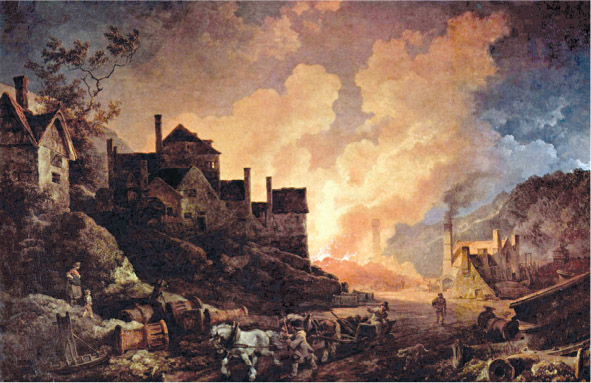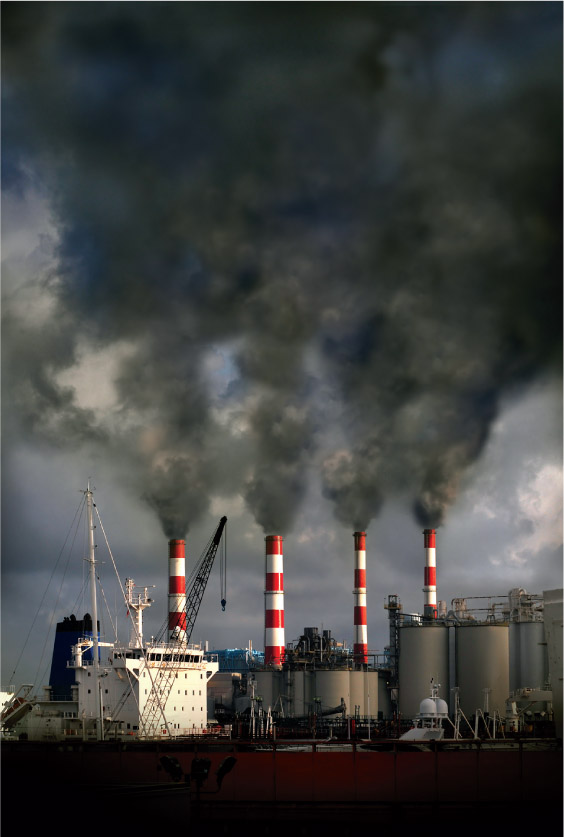11.3 Impact of the Industrial Revolution
Effects on the environment
By the nineteenth century, it was clear that the Industrial Revolution was having a serious effect on the environment in many parts of England.
We know about the environmental impact of the Industrial Revolution because it was recorded by both writers and painters. The quiet countryside of England had been transformed wherever industry had sprung up. Nonetheless, people had quite different ways of seeing the transformation.
The English artist Philip James de Loutherbourg, for example, was thrilled by the massive shapes of the new factories, and particularly by the great fires of the furnaces and the energy of the machines. He was one of many painters who went to Coalbrookedale to observe industry at work (see Source 11.23). He showed the factory at night, when the buildings stood out against the red-orange glare of the flames from the furnaces.
The result is very dramatic. Even so, he still shows the land in front of the factory as being littered with all sorts of broken machinery.

Long-term impacts
We are all children of the Industrial Revolution. We live in the cities it created, we work in its factories and we use its products. We share the excitement of the inventors and businessmen of that period about technological progress. Many people were aware of the impact of the Industrial Revolution on human beings and on the environment, and some such as Robert Owen were actively concerned about this. Since that time, we have become more aware that increases in production also mean the greater use of the Earth’s resources. In particular, production on a large scale requires energy, which originally came from fossil fuels such as coal, oil or gas.
In our own time, the emission of greenhouse gases has begun to affect the climate of the whole Earth in a process known as global warming. It might be said that the people of the eighteenth century created the machines and techniques of the Industrial Revolution, and that it is up to our own generation to manage their effects.
Our growing consumption also meant an increase in waste. In the developed countries of the Western world especially, every household creates a large amount of rubbish that becomes land fill in rubbish dumps. In Australia, we are only just beginning the process of reducing waste and of recycling wherever possible. If the first chapter of the story of the Industrial Revolution was written by the inventors of the 1750s, it may well be that the last chapter will be written by your own generation.
At the start of the Industrial Revolution, people focused on the wonderful opportunities provided by technology to produce more, and therefore to consume more. Since resources seemed almost endless, both within Britain and across its vast empire, there seemed little need to question how we used them. It is only in more recent times that we have had to face the real possibility that resources such as iron ore and fossil fuels such as coal, oil and gas are finite, and will run out one day.
This story will be completed when we reach the final stage of the Industrial Revolution: sustainability, or the ability to make careful and reasonable use of the limited resources on Earth. Human beings first used modern technology to make greater use of the Earth’s resources; it is now our task to develop technology so that we may make more intelligent and responsible use of those resources. In the year that this book was written, the population of the Earth reached seven billion, reminding us again how urgent it is to try to develop technology to provide a decent living for all humans.
